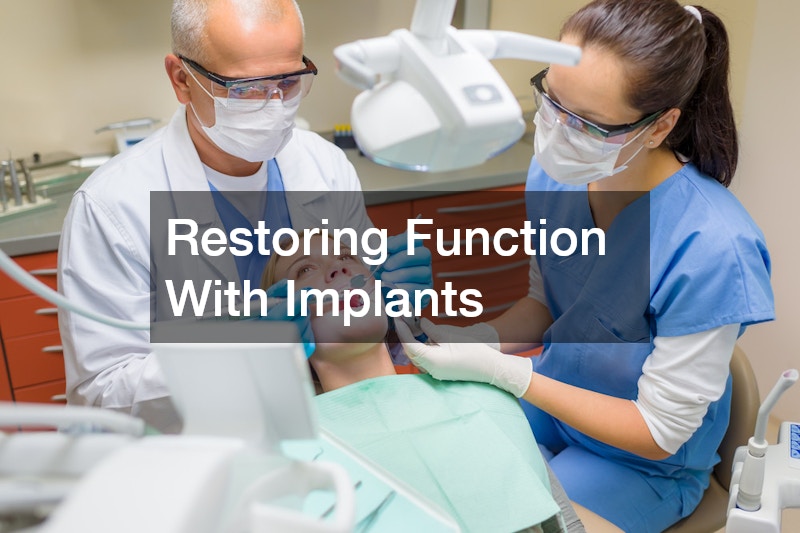Taking care of your oral health is a lifelong journey that evolves with every stage of life. From baby teeth to braces, and from routine cleanings to advanced restorative procedures, understanding the different aspects of dental care can help you make the best choices for yourself and your family. This roadmap is designed to walk you through the many services, specialists, and treatment options available to ensure your teeth and gums remain healthy, functional, and attractive at every age.
Whether you’re looking to maintain your oral hygiene, treat a specific issue, or improve your smile’s appearance, there is a wide spectrum of care available to meet your needs. But navigating this landscape requires an understanding of which professionals to see, what procedures might be right for you, and how your oral health needs shift over time. This guide breaks it all down, providing clarity and confidence as you take steps toward optimal dental health. Let’s explore the options so you can create a care plan that works for every stage of your life.
A Lifelong Relationship With a Dentist
One of the most beneficial relationships you can establish in your oral health journey is with a trusted family dentist. This type of dental professional provides comprehensive care for patients of all ages, making them a one-stop solution for household dental needs. From young children getting their first checkups to seniors needing restorative procedures, a dentist can address a broad range of oral health concerns while offering continuity of care over time.
Having a single provider for the whole family simplifies scheduling and allows the dentist to track hereditary or behavioral trends that may affect multiple family members. Preventive treatments, such as regular cleanings, fluoride applications, and sealants, are typically part of a family dentist’s offerings. They also provide basic restorative services, such as fillings and crowns, when needed. Since they grow familiar with each patient’s history, family dentists can provide personalized, proactive care that evolves with the patient’s needs.
Beyond the convenience, this kind of consistent, long-term relationship builds trust, making visits less intimidating—especially for children. For families aiming to simplify their oral health routine while receiving customized care, partnering with a family dentist is a smart and practical approach to lifelong dental care.
Restoring Function With Implants

Tooth loss is a common issue affecting millions of adults, and replacing missing teeth is vital not only for aesthetics but also for proper function. Dental implants have emerged as the gold standard for tooth replacement due to their durability, comfort, and natural appearance. These implants are titanium posts surgically inserted into the jawbone, serving as artificial roots to support crowns, bridges, or dentures.
Dental implants provide a stable foundation that mimics the function of natural teeth, making eating and speaking easier. They also prevent bone loss, a common issue when teeth are missing, by stimulating the jawbone just like a natural tooth root would. With proper care, implants can last a lifetime, making them a long-term solution for those seeking to restore their smile and oral functionality.
Although the process may involve multiple steps—such as consultations, imaging, and a surgical procedure—many patients find the investment worthwhile. Implants not only enhance self-confidence but also improve overall dental health by preventing adjacent teeth from shifting. If you’re missing one or more teeth, consulting with a restorative dentist about implants could be a crucial step in your care journey.
Brightening Your Smile With Whitening
Having a bright, white smile is often associated with health, youth, and attractiveness. While daily brushing and flossing help maintain clean teeth, they may not be enough to remove stains caused by coffee, wine, smoking, or aging. This is where professional teeth whitening comes into play, offering a safe and effective way to enhance your smile’s brightness.
Unlike over-the-counter whitening kits, professional whitening treatments offered by dental offices use stronger bleaching agents and are carefully monitored for safety and effectiveness. The results are often faster and more noticeable, with some patients experiencing significant improvement in just one session. In-office procedures may be combined with take-home trays to maintain the effect over time.
Teeth whitening is one of the most popular cosmetic treatments because it’s non-invasive and provides immediate visual impact. However, it’s important to consult a dentist before beginning any whitening regimen, especially if you have sensitivity, cavities, or existing dental work. Incorporating professional whitening into your dental care plan can boost your self-esteem and encourage better oral hygiene habits by making you more motivated to keep your teeth looking great.
Finding the Right Provider With Dentists Locally

When it comes to consistent oral health, having access to reputable and accessible professionals is essential. Searching for local dentists not only ensures convenience but also facilitates long-term relationships and continuity in your dental care. Proximity allows for easier scheduling of routine visits and makes it simpler to handle emergencies should they arise.
Local dentists often build strong community reputations, which can be reassuring when selecting a provider. Reviews from neighbors or friends, community involvement, and familiarity with local healthcare systems are all indicators of quality service. Additionally, local practices may offer more personalized care compared to larger dental chains, as they depend on word-of-mouth and customer loyalty to sustain their business.
Working with a local dentist allows you to build a collaborative relationship where the provider understands your specific dental history, needs, and preferences. Whether you need preventive care, cosmetic procedures, or emergency treatments, establishing a relationship with a local professional can make all the difference. Prioritizing convenience and trust, local dentists are often the cornerstone of a successful care plan.
Exploring a Range of Treatment Options
The field of dentistry has advanced significantly, offering a wide array of dental treatment options to address virtually any issue. From basic procedures like cleanings and fillings to more complex ones such as root canals and veneers, patients today can choose from various interventions to improve both function and aesthetics.
Treatment options are often categorized into preventive, restorative, and cosmetic care. Preventive options include routine exams, x-rays, and sealants. Restorative procedures aim to fix damaged or missing teeth using fillings, crowns, or implants. Cosmetic treatments focus on improving the appearance of your smile through whitening, reshaping, and alignment correction.
Having multiple dental treatment options allows providers to create customized care plans tailored to your unique goals and concerns. For example, a patient with a cracked tooth might be offered a crown, bonding, or extraction, depending on the severity and desired outcome. Collaborating with a skilled dentist ensures you understand all available options and can make informed decisions. A flexible, patient-centered approach to treatment is key to achieving long-term dental care success.
Understanding Complex Needs Through Surgery

While many dental issues can be addressed with non-invasive techniques, some situations call for oral surgery. This specialty area of dentistry deals with complex problems involving the teeth, jaws, and facial structures. Common procedures include wisdom tooth extraction, corrective jaw surgery, and dental implant placement.
Oral surgery may be necessary for patients suffering from impacted teeth, facial trauma, or severe infections that cannot be treated with antibiotics alone. It can also address conditions like temporomandibular joint disorders (TMJ), cysts, and sleep apnea. These surgical procedures often require collaboration between general dentists and oral surgeons to ensure seamless care and recovery.
Though the idea of surgery may sound intimidating, advances in technology and anesthesia have made most procedures safer and more comfortable. Recovery times are also faster, especially when patients follow proper aftercare instructions. By understanding when surgery is appropriate, you can be prepared to take this important step in your care journey if the need arises.
Enhancing Your Smile With a Cosmetic Dentist
Today’s patients are increasingly interested in not just healthy teeth but also beautiful ones. That’s where cosmetic dentistry comes in—a branch of dental care focused on improving the appearance of your teeth, gums, and smile. These services are often elective but can have a profound impact on self-confidence and overall appearance.
Cosmetic dentistry includes a variety of treatments such as veneers, bonding, and orthodontics. These procedures can address concerns like discoloration, uneven spacing, chipped or misshapen teeth, and even minor bite issues. In many cases, cosmetic enhancements are combined with restorative procedures to improve both form and function.
A cosmetic dentist will typically perform a smile analysis to determine what procedures can help you meet your aesthetic goals. While some treatments are completed in a single visit, others may involve a series of appointments. Whether you’re preparing for a special event or simply want to feel more confident, cosmetic dentistry offers numerous solutions that align with your lifestyle and preferences. When integrated into a comprehensive care plan, cosmetic enhancements can lead to transformative results.
Strengthening Your Smile With Bridges
For those missing one or more teeth, dental bridges offer an effective way to restore oral function and appearance. A dental bridge is a prosthetic device that spans the gap where teeth are missing, using adjacent healthy teeth as anchors. It’s a common solution for patients who are not candidates for implants or who prefer a less invasive alternative.
Bridges can be made from a variety of materials, including porcelain, ceramic, or metal alloys, and are designed to blend seamlessly with your natural teeth. They not only improve the appearance of your smile but also restore your ability to chew and speak properly. Furthermore, bridges help prevent remaining teeth from drifting out of position, which can lead to bite problems and further tooth loss.
The process of getting a dental bridge typically involves multiple visits, including preparation of the supporting teeth, taking impressions, and fitting the final prosthesis. When cared for properly through brushing, flossing, and regular dental visits, bridges can last many years. If you’re exploring options to replace missing teeth, consider how bridges might fit into your overall care strategy.
Starting Early at a Pediatric Dentist

Good oral health habits should begin in childhood, and a pediatric dentist office is specially equipped to foster those habits from the very beginning. Pediatric dentists are trained to care for children’s unique dental needs, including early development, teething, cavity prevention, and orthodontic evaluations.
These offices are designed with children in mind, featuring child-friendly décor, smaller dental instruments, and staff trained in calming anxious young patients. The goal is to create a positive experience that encourages lifelong care and reduces fear or anxiety about dental visits. Pediatric dentists also educate parents on proper brushing techniques, nutrition, and the importance of routine checkups.
In addition to basic cleanings and exams, pediatric practices often offer fluoride treatments, sealants, and early intervention for bite issues. These early efforts can help prevent serious problems later in life and contribute to a healthy, confident smile into adulthood. Establishing a dental home at a pediatric dentist office ensures your child gets the best possible start on their dental care journey.
Perfecting the Look With a Cosmetic Dentist
As patients become more focused on smile aesthetics, many seek out a cosmetic dentist to achieve their ideal appearance. Unlike general dentistry, which focuses on health and function, cosmetic dentists specialize in treatments that enhance visual appeal. These professionals have a keen eye for balance, color, and proportion, making them well-suited for creating natural-looking smile transformations.
A cosmetic dentist may offer treatments such as bonding, contouring, veneers, and gum reshaping. They often work in conjunction with orthodontists, periodontists, or oral surgeons to ensure that both the health and beauty of the smile are optimized. The process typically begins with a consultation where you discuss your goals and receive a customized treatment plan.
While cosmetic treatments are considered elective, their impact on confidence, social interaction, and even career opportunities can be significant. By working with a skilled cosmetic dentist, you can achieve results that are both beautiful and natural, enhancing your quality of life. As part of a well-rounded dental care routine, these services ensure your smile looks just as good as it feels.
Your oral health needs will shift throughout your life, but one thing remains constant: the importance of proactive, comprehensive dental care. Whether you’re introducing your child to a pediatric dentist, exploring restorative options like dental implants or bridges, or enhancing your smile through cosmetic procedures, the choices you make along the way have a lasting impact. By understanding the roles of various dental professionals and the wide array of services available, you can create a care plan tailored to your needs, lifestyle, and goals.
Consistent care, routine visits, and informed decision-making will help prevent problems, address existing concerns, and keep your smile looking and feeling its best. Consider your dental care roadmap not just a guide for treatment, but a commitment to health, function, and confidence across your entire life.


